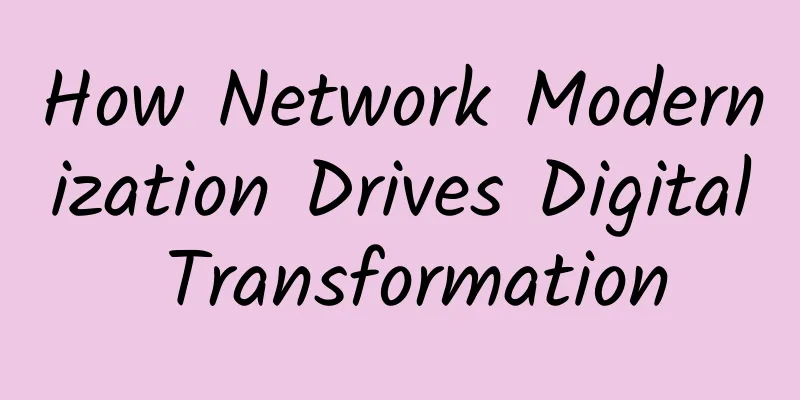Building 5G and expanding 4G: 2G/3G network withdrawal is in progress around the world

|
The COVID-19 pandemic has driven the demand for digital technology among consumers and industries, making high-speed Internet access more important than ever. To ensure that users can obtain stable and high-speed network access services, operators in various countries have invested heavily in building 5G, expanding 4G coverage, and trying to provide as much wireless spectrum as possible for 4G/5G networks. However, as of the end of February 2021, only about 40 regional markets in the world have issued new 5G frequency bands, and operators in other places can only use the existing old frequency bands at this stage. In this case, operators have to consider shutting down the old standard network and transferring the frequency band to the new standard network. Data provided by GSMA shows that between now and 2025, more than 55 2G/3G networks are expected to be shut down worldwide to use spectrum and site resources for new 4G and 5G networks, and operators will benefit greatly from this action. The first is to improve mobile broadband coverage. The 2G/3G networks deployed by operators in various countries are mostly based on medium and low frequency bands such as 900MHz, 1800MHz, and 2100MHz. The electromagnetic waves in this frequency band have a wide coverage range and moderate capacity. Therefore, after the withdrawal of 2G/3G networks, operators can use these frequency bands to deploy 5G and expand 4G to provide users with a better service experience. Second, it improves cost-effectiveness. After long-term use, 2G/3G networks are becoming increasingly aged, occupying a large amount of capital expenditure and operating expenditure of operators, while the ARPU (average revenue per user) value obtained from these expenditures is relatively low. If 2G/3G is shut down and more funds and resources are used for digital technologies such as 4G VoLTE, operators can obtain better cost-effectiveness. The third is to promote the rapid development of the industry chain. For many years, operators and the communications industry chain have maintained a mutually reinforcing and win-win relationship. Operators provide a broad market space for communications manufacturers, and communications manufacturers provide operators with solutions to upgrade networks and improve services. Only when operators predetermine the network upgrade strategy and roadmap can the communications industry chain develop targeted solutions in a timely manner to help operators achieve their predetermined goals. GSMA research found that operators in different regions of the world have many differences in 2G/3G network withdrawal strategies. European operators are shutting down 3G faster than 2G. According to statistics, 19 operators in 14 European countries plan to shut down 3G by 2025, while only 8 operators in 8 countries plan to shut down 2G at the same time. In 2015, Net1 completely shut down its 3G network in Denmark and Sweden, Vodafone shut down its 3G network in 2020, and Telenor Norway and Swisscom will shut down their 3G networks in 2021. The reason is that although 2G is older than 3G, the widely covered 2G network can well support narrowband IoT services, while 3G is not as good as 2G in this regard. No operator in the Americas has shut down its 3G network yet. They prefer to shut down 2G to get more frequency bands to deploy 5G. Operators in the Americas are very active in investing in the next generation of mobile technology. Currently, 13 operators in 5 countries have launched 5G services. They need more frequency bands to improve 5G coverage. GSMA predicts that by the end of 2025, 15 operators in 7 countries in the Americas will shut down their 2G networks and reuse 2G spectrum for 4G and 5G network services. Asia is also retaining 3G, shutting down 2G, and continuing to expand 4G investment. Only Taiwan is simultaneously reducing 2G and 3G networks. It is expected that by the end of 2025, 29 operators in Asia will shut down 2G and 16 operators will shut down 3G. Influenced by the current economic development situation, Africa is more inclined to continue using 2G and 3G networks. In Africa, the 2G market is twice the size of 3G, and smartphones are not popular enough. Low-priced feature phones are popular among local users, accounting for 42%. Therefore, in the short term, African operators do not have enough motivation to replace 2G/3G networks. However, as the user scale and business needs grow, operators will sooner or later have to consider network upgrade plans. Oceania countries are expected to shut down 2G in the near future, while 3G networks will continue to be maintained for a while. Australia and New Zealand launched 2G services in 1993 and 3G services in 2004. Oceania is relatively active in deploying 5G. Currently, four countries have provided 5G commercial services, and other countries are also conducting corresponding tests. At present, 2G networks only account for 5% of the total number of connections in Oceania, and the traffic they carry is also very small. As early as 2018, operators in Australia announced the closure of 2G networks. Although no operator has officially released a 2G network withdrawal plan, GSMA expects that the local 2G network will definitely be shut down faster than the 3G network. Shutting down old networks and using resources for new network construction is an effective development strategy, but GSMA believes that there is no fixed paradigm for specific actions. For example, European countries are focusing on shutting down 3G, while other regions are more inclined to shut down the older 2G. Different countries and regions have different needs and usage experiences for mobile communication technologies, so there will be different decisions on network upgrades. GSMA recommends that operators publish network evolution roadmaps as soon as possible so that communication manufacturers have sufficient time to develop corresponding products and solutions, so that operators can promote network upgrades faster and more cost-effectively. Of course, in the long run, the speed at which 2G, 3G, and 4G exit the market may be different, but old technologies will eventually be eliminated, and turning to new technologies will be the future development trend. |
<<: Verizon to launch 5G home internet service in Cleveland
>>: Which is faster, 5G or Wi-Fi 6? A hardcore comparison tells you
Recommend
Application of 5G in epidemic prevention and control in medical system
At the beginning of 2020, the COVID-19 epidemic w...
In 2020, my country's total base stations reached 9.31 million, and the interconnection bandwidth of the three major operators surged
[[411113]] According to the latest report "C...
CommScope’s Viewpoint: Operators’ Network Efficiency Transformation in the 5G Era
Despite the impact of the "black swan" ...
Ren Zhengfei’s response to the “export ban” is here: every one of them is very powerful!
Recently, Mr. Ren Zhengfei, founder and president...
When do microservices use the Http protocol to communicate, and when do they use Lrpc?
Let me first state the following conclusion. 1 Sp...
How to establish a performance testing strategy in a cloud environment
【51CTO.com Quick Translation】 Living in the prese...
OneTechCloud: Hong Kong CN2 quarterly payment 20% off 64 yuan/quarter, Hong Kong BGP monthly payment 30% off 46 yuan/month, US CN2 GIA monthly payment 10% off
OneTechCloud is a Chinese hosting company founded...
Advantages of IPv6: Faster connections, richer data
The advantages of IPv6 are numerous, including fa...
Research report points out: By 2027, the 5G service market will exceed US$250.3 billion
Recently, Acumen Research and Consulting, a globa...
Huawei's Song Xiaodi: Breaking five misconceptions and accelerating green development
At the Huawei Day0 Lighting Up the Future Summit ...
Ruishu Information is listed as a representative manufacturer in the field of online anti-fraud in Gartner's "Online Anti-Fraud Market Guide" report!
In July 2021, Gartner, a global authoritative IT ...
Yecao Cloud: Hong Kong independent server starting from 199 yuan/month, optional BGP/CTGNet/Huawei Cloud line
The blog has shared Yecaoyun product information ...
The 5G competition between China and the United States is heating up. What will the future hold?
As we all know, 5G has become the main battlefiel...
Looking at 5G from a different perspective: Don’t talk about technology, talk about demand
[[280015]] 4G changes life, 5G changes society. W...
5 years, $50 billion! In order to catch up with China, they call on Biden to speed up the construction of 5G
The American Forbes website recently published an...
![[Black Friday] spinservers: $49/month - E3-1280v5, 32G memory, 1TB NVme, 10Gbps bandwidth, San Jose/Dallas data center](/upload/images/67cabcf402984.webp)








